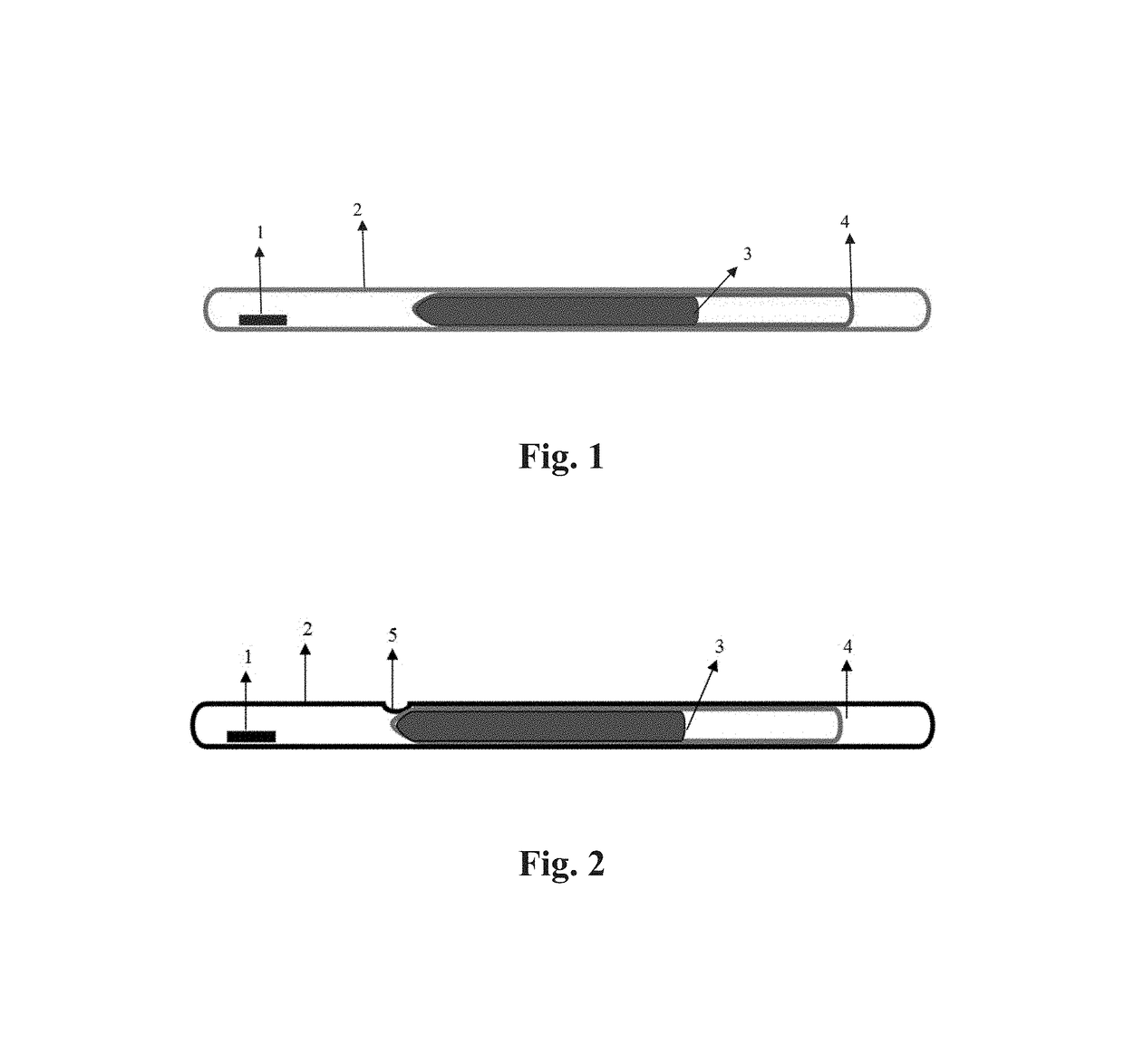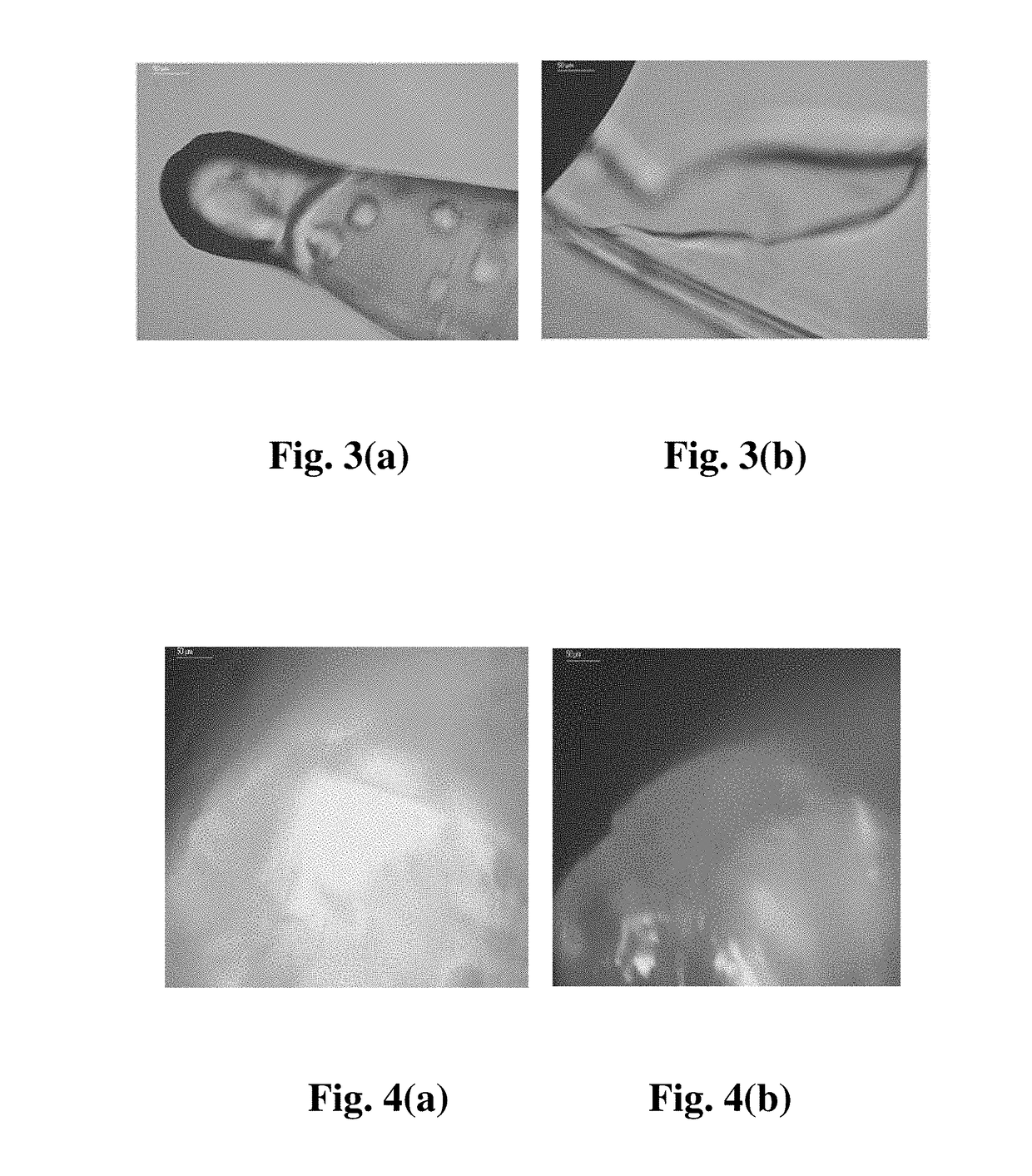Method of sampling oil-bearing inclusion
a technology of inclusion and oil, applied in the field of oil and gas exploration and research, can solve the problems of large amount of contamination introduced from outside, inability to selectively release inclusion ingredients, so as to reduce contamination, reduce contamination, and operate simple and convenient
- Summary
- Abstract
- Description
- Claims
- Application Information
AI Technical Summary
Benefits of technology
Problems solved by technology
Method used
Image
Examples
example 1
[0042]This example was performed in the following steps.
[0043](1) A certain amount of calcitecement sample 1 in a brecciated fracture zone of LUO well No. 63 in Zhanhua Sag was weighed and smashed with a mortar into particles having a across area less than 1 mm×1 mm. The particles were then dried and washed with a solvent to remove hydrocarbon ingredients absorbed on a surface thereof.
[0044](2) Two square quartz capillary tubes were selected, a first square quartz capillary tube 4 having an internal diameter of 0.7 mm×0.7 mm, an external diameter of 0.9 mm×0.9 mm, and a length of about 50 mm, while a second square quartz capillary tube 2 having an internal diameter of 1 mm×1 mm, an external diameter of 1.2 mm×1.2 mm, and a length of about 60 mm. The two square tubes were first put into a dichloromethane solvent and soaked for 48 hours, then taken out, and dried. A hydrogen flame gun was used to close off one end of both of the two square tubes, which were then put into a dryer to be...
example 2
[0051]Another oil-bearing inclusion was analyzed about the ingredients thereof. Before that, background ingredients (i.e., ingredients collected in the same way in which the ingredients of the inclusion of the present disclosure were collected except that the main minerals around the inclusion were not ablated) of a sample of the inclusion were collected and analyzed, with the result thereof shown in FIG. 6.
[0052]After collection and analysis of the background ingredients, the same sample was used to perform collection and analysis of ingredients contained therein.
[0053]This example was implemented in the following steps.
[0054](1) A sample 1 was smashed with a mortar into particles having a cross section less than 1 mm×1 mm. The particles were then dried and washed with a solvent to remove hydrocarbon ingredients absorbed on a surface thereof.
[0055](2) Two square quartz capillary tubes were selected, a first square quartz capillary tube 4 having an internal diameter of 0.7 mm×0.7 mm...
example 3
[0062]An ingredient analyzer GC(7890A)-MS(5975C) by Agilent Technologies (the analyzer used here in this example was the same as that used in Example 1 or 2, but the analysis conditions of this example were different from those of Example 1 or 2) and a comprehensive two-dimensional gas chromatography-time-of-flight mass spectrometer, Pegasus 4D by LECO Corporation were used for gas chromatography-mass spectrometry analysis of ingredients of an oil-bearing inclusion in this example.
[0063]The chromatographic conditions of the gas chromatograph-mass spectrometer were as follows: a chromatographic column model of DB-5 ms, a specification of 30 m×0.32 mm×0.25 μm, a temperature of 300° C. at a sample inlet, and a temperature of 300° C. in a transmission line. The chromatographic column was heated by temperature programming which read: 60° C. (2 min)−50° C. / min→140° C.−3° C. / min→300° C. (10 min). Helium gas was used as the carrier gas at a flow rate of 1.5 ml / min without split stream sampl...
PUM
| Property | Measurement | Unit |
|---|---|---|
| diameter | aaaaa | aaaaa |
| temperature | aaaaa | aaaaa |
| temperature | aaaaa | aaaaa |
Abstract
Description
Claims
Application Information
 Login to View More
Login to View More - R&D
- Intellectual Property
- Life Sciences
- Materials
- Tech Scout
- Unparalleled Data Quality
- Higher Quality Content
- 60% Fewer Hallucinations
Browse by: Latest US Patents, China's latest patents, Technical Efficacy Thesaurus, Application Domain, Technology Topic, Popular Technical Reports.
© 2025 PatSnap. All rights reserved.Legal|Privacy policy|Modern Slavery Act Transparency Statement|Sitemap|About US| Contact US: help@patsnap.com



